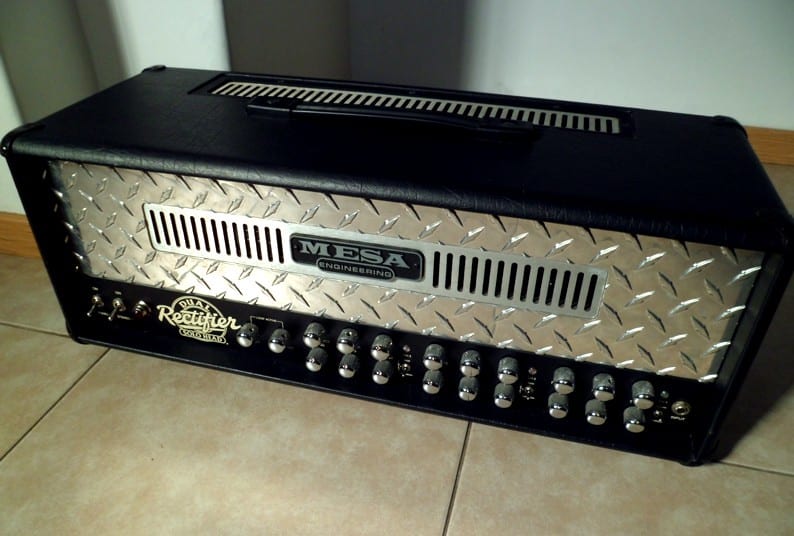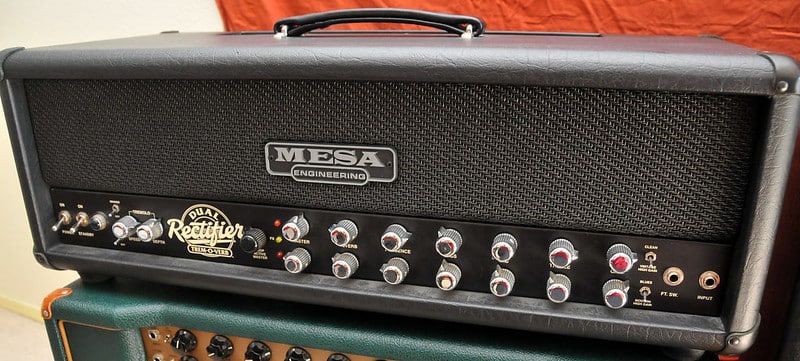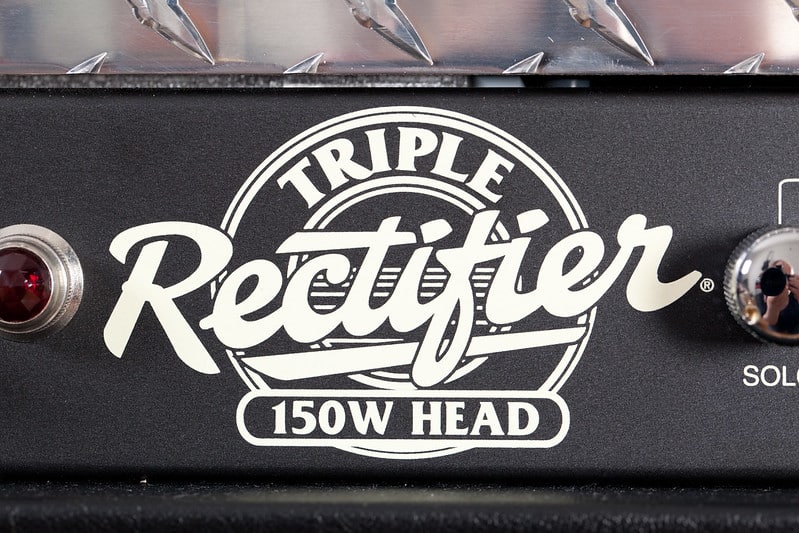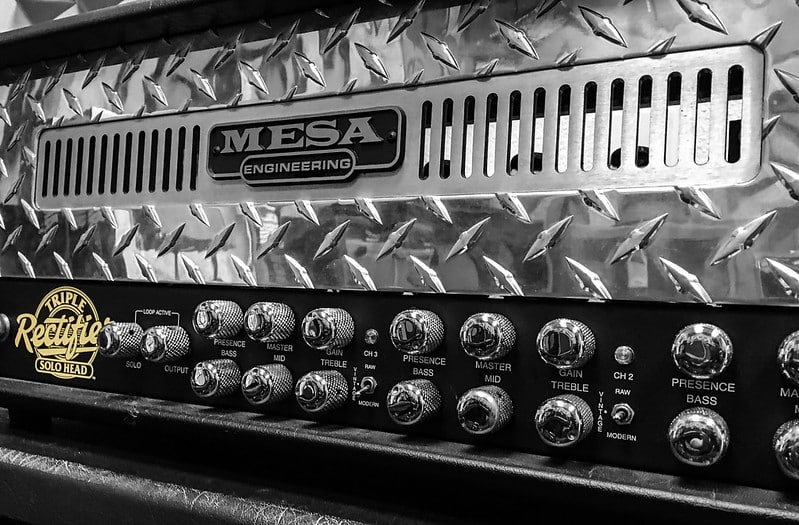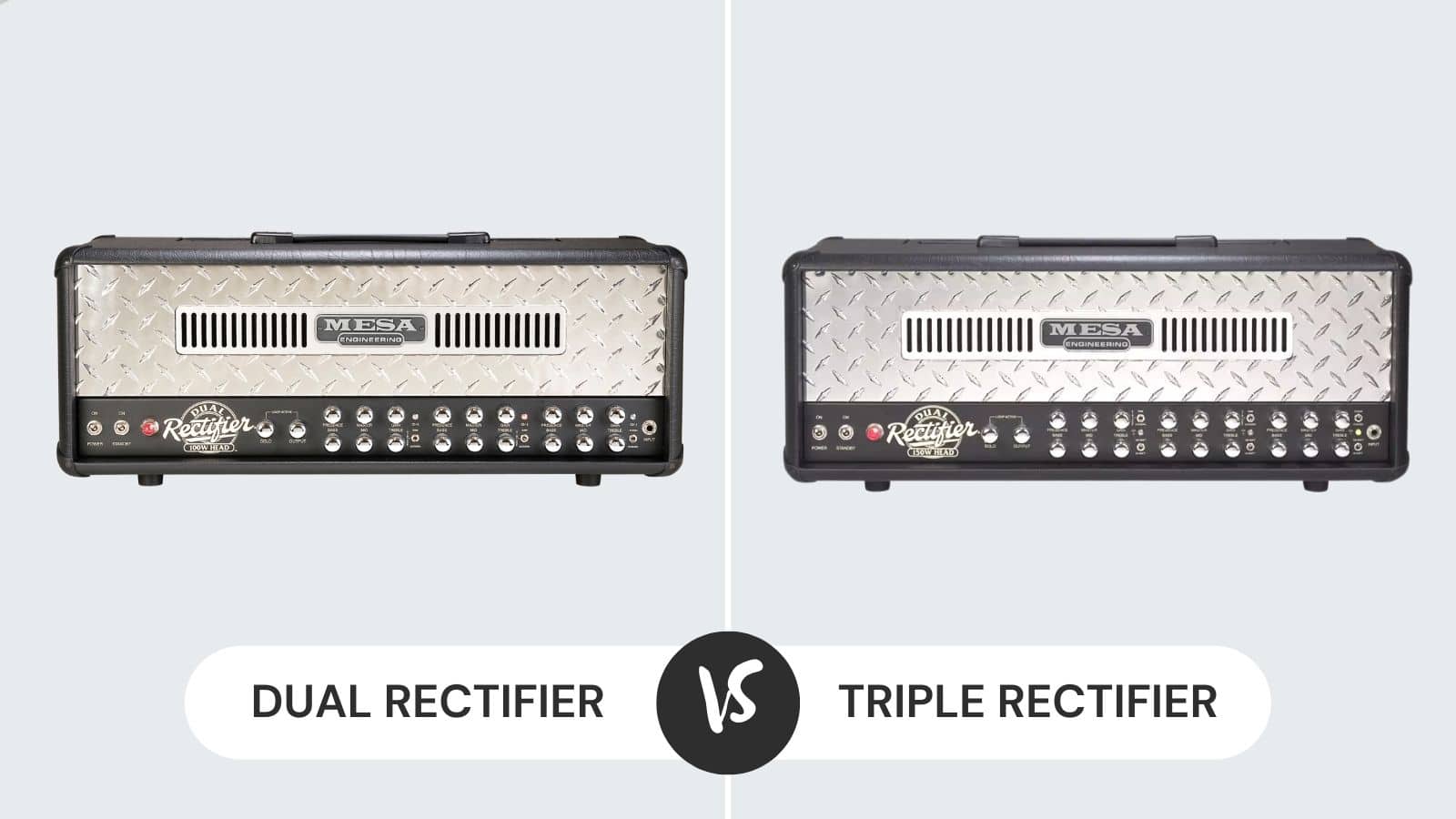
A guitar amp is an important part of the music production equipment because they are responsible for amplifying the tunes and helps add clarity to the music.
Mesa/Boogie is popular for manufacturing high-end amps, and dual rectifier and triple rectifier are the two most popular amps with performance-based playback experience.
These two amps look pretty similar but have different features that you must know about!
Dual Rectifier vs Triple Rectifier Comparison
| Features | Dual Rectifier | Triple Rectifier |
|---|---|---|
| Channels | Three | Three |
| EQ | Three-band | Three-band |
| Construction | Black leatherette | Birch plywood and black Tolex |
| Footswitch | Yes, with a six-button configuration | Yes, with seven-button |
| Weight | 42 lbs. | 48 lbs. |
Dual Rectifier
The dual rectifier looks like the previous versions as it has a chrome and diamond-plated grille. In addition, it has a texture covering made from black vinyl and leather corners that give it a vintage look.
The knobs are perfectly polished and have a logo on the front to create an industrial appearance.
The grilles are now available in black jute and black vinyl colors – these are the standard colors, and you can get the material and colors customized as well.
It is suitable for every music genre and style. It has a rigged appearance but seems heavy, making it challenging for outdoor gigs.
1. Design
This is a three-channel amp and has a six-button footswitch, and comes with the DIN cable. It is designed with standby and power switches on the right and left, respectively.
There is a red light on the front, along with output and solo knobs. These knobs are activated when the FX loop is enabled.
The solo knob is used for adding boost and gain to the lead tracks, and this solo button is added to the footswitch to activate the knob.
The output knob can be used for controlling the amp volume. It is activated once you have balanced the master and gain volumes of the channel according to the music taste.
In addition, there are three-channel controls on the front side and are followed by an input jack.
There are two mini toggles for every channel, and every channel includes switchable modes. For instance, channels two and three have raw, modern, and vintage modes, while the first channel has pushed and clean modes.
Every channel is integrated with independent wattage controls and two-position mini-toggles for the channels. This is a multi-watt option that allows the users to select the wattage from 50W to 100W for every channel.
When you choose 50W, you will be able to acquire power-tube clipping. For every channel, there are six knobs such as treble, mid, presence, gain, master, and bass.
On the backside, there are level and slave-out knobs to help capture the power amp and preamp’s sound.
The amp also includes five outputs for connecting the cabs of different impedances, including 4 ohms, 8 ohms, and 16 ohms.
This dual rectifier has an FX loop, which allows quick integration of outboard effects processors with the help of a footswitch. The FX loop allows the users to override the footswitch and choose any of the three channels.
On top of everything, there is a tuner out feature for sending out clean and padded signals to the external tuners. Also, there is a tuner button available, which helps with silent tuning.
2. Sounds
A dual rectifier is a promising choice for guitarists who like to play on the middle bands because it offers just enough range to deliver the best performance from a channel. It offers a clean rhythm with soaring lead and classic riff and rock rhythms.
Channel 1 provides sweet and strident music, while channel 2 is perfect for mature and subtle tones. Lastly, channel 3 helps create vintage tones with an extremely responsive and tight sound.
With the second and third channels, the modern music will be loud and fat, while the vintage tones will be quieter and more subtle.
Pros
- Aesthetic design
- Excellent power range
- A variety of tones for every musician
Cons
- Heavy
- Expensive
Triple Rectifier
Another amp designed by Mesa/Boogie is the triple rectifier, with which they expanded the features to make it a more versatile choice. With this amp, the brand has moved from two-channel amps to three-channel amps to enhance the sound gain.
This three-channel amp is designed to increase the sound’s versatility. It has a wide and deeper footprint for musicians who are into heavy music.
1. Design
A triple rectifier is designed with a multi-watt design, with which you can select the channels and power connections – you can choose from 50W and 150W power connections.
Every channel on the amp comes with independent wattage controls, which can be accessed through the second mini-toggle because it has a two-position design.
The multi-watt channel design allows the users to set every channel independently, be it at 50W or 150W. This means that you can use two or all six power tubes of the amp for every channel.
As far as the tube compliments are concerned, there are 3x5U4, 5x12AX7, and 6x6L6, and the bias select switch helps select the tube to ensure error-free and consistent performance.
There are eight sound modes available across three channels. There are output and solo knobs designed on the amp, which are activated whenever the FX loop is activated.
The solo knob helps increase the boost, and you can activate it with the help of a solo button preset on the footswitch.
On the other hand, the output knob can be used to control the amp volume, but you need to balance the master and gain volumes of the amp to use it.
Every channel is designed with a multi-watt switch, treble, master, mid, presence, bass, and assignable channel rectification. There is recto tracking and tube tracking to compress the sound, leading to a clean and subtle sound.
In addition, the diode rectification is a suitable choice for achieving tight low-end, particularly when you need more headroom. The FX loop has a buffered and foot-switchable design and includes two jacks, assign control, and send level knob.
The assigned control has a rotary function that helps bypass the loop or assign the loop to another channel. It is suitable for integrating the footswitch with the outboard effect processor.
A bias switch is a great feature when you want to swap the 6L6 power tubes for EL34s. Also, the rectifier select switch can be used for toggling the channels to achieve a saggy music feel.
The availability of dual power modes allows the users to create full-power sound without compromising the clean headroom.
2. Sound
Channel 1 of the triple rectifier promises improved pushed and clean sounds. This is because the amp has well-balanced and full-bodied clean signals, which makes it a great option to shape up the clean tone, promising better sound quality.
For instance, it can be used for metal and heavy rock music. On the other hand, the lower gain end of channel 2 and channel 3 promise classic-rock music, particularly if you enable the RAW mode.
The triple rectifier promises smooth and progressive transition from RAW’s higher-end, while the VINTAGE mode helps ensure the seamless tonal transition. Channel 3 is a suitable choice for people who like heavy aficionados.
Overall, you can easily shift from vintage to modern note, leading to improved high mid, and low end, along with an aggressive bite in the tracks.
Channel 1 has pushed and cleaned notes, as already mentioned, which leads to throaty, clean, and crunch tones.
Channel 2 and channel 3 are integrated with RAW mode, which has a touch-sensitive response to help you enjoy classic rock and blues music.
In addition, the latter channels have vintage modes to achieve liquid gain and thicker harmonics. In simpler words, it can be used for different music styles and genres.
Pros
- Dual power mode
- Allows tube swapping
- Independent mid, presence, gain, treble, and more
- Clean and padded signals
Cons
- Complex features
The Final Verdict
A dual rectifier and triple rectifier are two exceptional amps with a wide range of sound presets. The dual reflector is suitable for people who like vintage as well as modern music.
However, the triple rectifier is suitable for people who like to create heavy metal, blues, and classic rock music.

